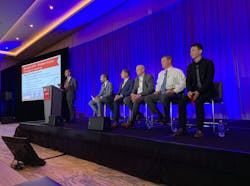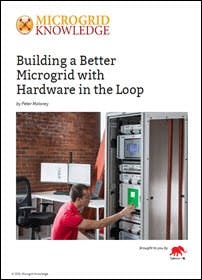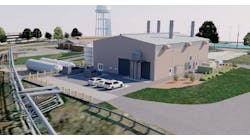In a panel discussion at Microgrid 2019 in San Diego, Typhoon HIL experts explored how model-based system engineering — in particular ultra-high-fidelity Hardware in the Loop (HIL) digital twins — significantly derisk and accelerate projects, eliminate microgrid control integration and interoperability issues, and deliver improved functionality and resilience.
At Microgrid 2019 in San Diego, experts from Raytheon, EPC Power, Schneider Electric, Schweitzer Engineering Laboratories and Eaton participated in a panel discussion with session leaders Paul Roege, vice president for strategic initiatives at Typhoon HIL; H.G. Chissell, founder and CEO of Advanced Energy Group; and Matt Baker, director of microgrids and critical power at Typhoon HIL.
Titled “Making Sure Your Microgrid will Work,” the recorded panel explored how to use model-based engineering and Hardware in the Loop (HIL) testing. Panelists delved into the question: What is the critical problem that model-based engineering solves for microgrid development?
Roege began by touching on how we develop microgrids today and what can be improved to make the process flow more efficiently.
He outlined how the different parties in microgrid development are “all talking about the system,” but not “looking at the system.” In other words, it’s not a very tightly integrated process and is currently prone to inefficiency and error.
How can we change the process?
This recorded discussion from Microgrid 2019 tackles that question and others:
- How does Hardware in the Loop testing and model-based engineering impact microgrid modeling?
- Does HIL dive down to the level of fault current contribution by the inverters? Can you look at breaker coordination and make sure to have enough fault current to trip those over current devices?
- Have you experienced a real time simulator, running a model, and optimizing the operation of the power system while it runs?
- How do you make HIL a justifiable component, or investment, of microgrid development?
- Would it be logical to put HIL into the pre-commissioning design development phase?
- Does HIL enable creation of libraries of scenarios that then can be used for simulation to help with pre-qualification?
View the Microgrid 2019 discussion by Typhoon HIL on risk reduction with controller HIL and model-based engineering.








